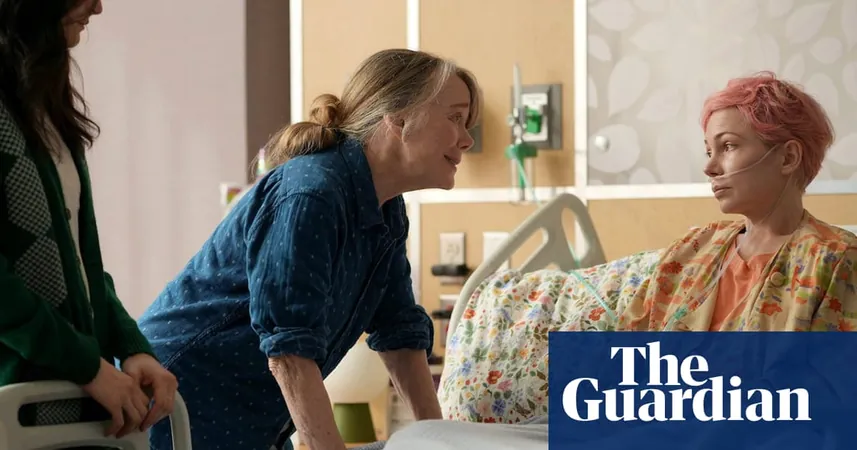
Unlocking the Secrets of Dying: What Really Happens to Your Body
2025-05-29
Author: Lok
What to Expect When You're Dying
In the gripping finale of FX’s series, *Dying for Sex*, a hospice nurse's enlightening perspective brings comfort as she explains the dying process to a patient. "Death is not a mystery. It’s a natural bodily process, much like giving birth," she asserts. As the moments pass, understand what unfolds in the body—from reduced appetite to a deepening sleep.
The patient may experience periods of delirium, marking the journey towards their final moments. Breathing patterns will shift, leading to what’s often referred to as the ‘death rattle’. Yet, before the end, there might be a surprising burst of energy, referred to as ‘the rally,’ where the individual regains clarity.
A Real Story Behind the Scenes
This narrative draws inspiration from the life of Molly Kochan, who, after a terminal breast cancer diagnosis in 2015 at just 46, explored life fully until her passing. Her personal account, chronicled in a podcast with Nikki Boyer, inspired the series, challenging the conventional view that death is too solemn a subject for audiences.
Dying: A Unique Journey
Every death is distinct, influenced by age, health, and circumstances. Hospice nurse Julie McFadden notes that most individuals, unless facing sudden trauma, go through recognizable stages. Increased awareness, termed ‘death literacy,’ can diminish the fears surrounding death.
Understanding the Transition Phase
Months prior to death, individuals often find themselves more bedridden, eating and drinking less, and needing more assistance with day-to-day functions. This phase may be muddled in those with conditions like dementia, where signs can mirror the illness itself.
In this transitional phase, a sensation of detachment may also surface, creating an altered perception of time. With lesser food intake, the body may shift to a state known as ketosis, which can sometimes bring unexpected relief and a sense of euphoria as certain neurotransmitters fluctuate.
Entering Active Dying
As life nears its close, symptoms intensify, marking the phase of ‘active dying.’ This stage can commence just days or hours before death, where unconsciousness becomes prevalent, and bodily rhythms become irregular. Interestingly, during this time, trained professionals, known as music-thanatologists, may use music to help soothe the dying.
It’s during active dying that many experience ‘the rally,’ a brief resurgence of lucidity where memories and appetites awaken, allowing the dying to reconnect with loved ones.
The Final Moments: What Happens?
In the last stage, a specific breathing pattern known as Cheyne-Stokes respiration emerges, creating a series of rapid breaths followed by pauses. This may give rise to the ‘death rattle’—thickened saliva in the throat—an experience often mistaken for pain but typically not uncomfortable.
The Importance of Death Literacy
In a culture that often shuns the topic of death, understanding it can be uplifting. Kim Rosenstock, co-creator of the series, emphasizes the need to portray death authentically. Fears can be mitigated through education. As McFadden points out, many facing the end of life find peace when they understand the process.
For those in the twilight of life, knowledge can be empowering, offering a sense of control in a situation often overshadowed by uncertainty. Embracing the inevitability of death, as McFadden poignantly states, can transform both how we live and how we approach our final moments.


 Brasil (PT)
Brasil (PT)
 Canada (EN)
Canada (EN)
 Chile (ES)
Chile (ES)
 Česko (CS)
Česko (CS)
 대한민국 (KO)
대한민국 (KO)
 España (ES)
España (ES)
 France (FR)
France (FR)
 Hong Kong (EN)
Hong Kong (EN)
 Italia (IT)
Italia (IT)
 日本 (JA)
日本 (JA)
 Magyarország (HU)
Magyarország (HU)
 Norge (NO)
Norge (NO)
 Polska (PL)
Polska (PL)
 Schweiz (DE)
Schweiz (DE)
 Singapore (EN)
Singapore (EN)
 Sverige (SV)
Sverige (SV)
 Suomi (FI)
Suomi (FI)
 Türkiye (TR)
Türkiye (TR)
 الإمارات العربية المتحدة (AR)
الإمارات العربية المتحدة (AR)